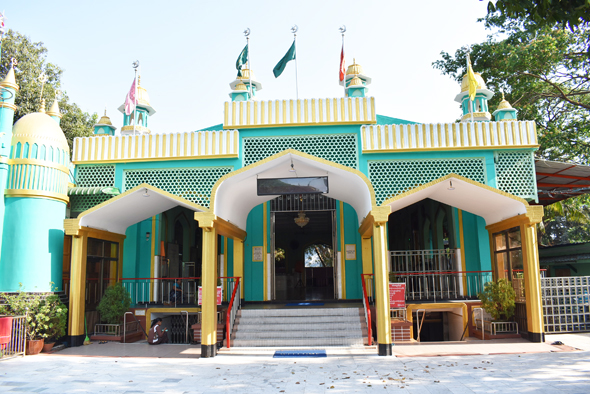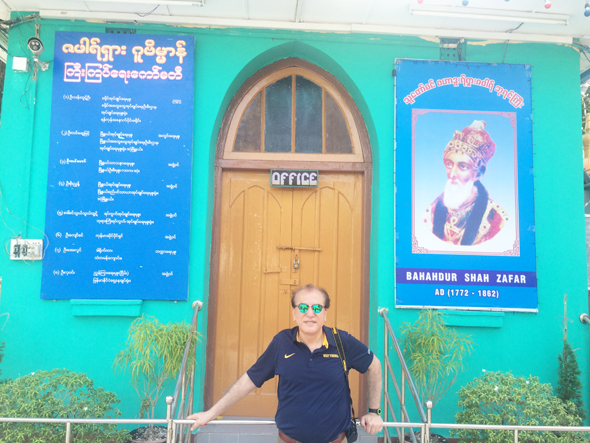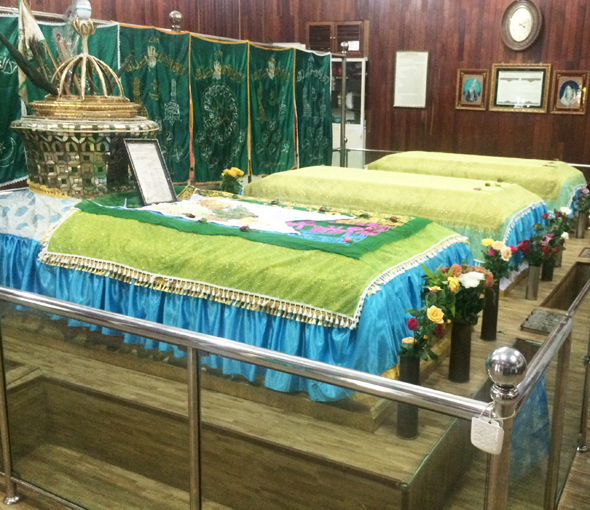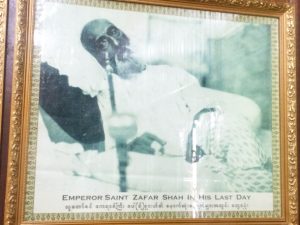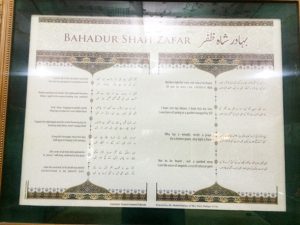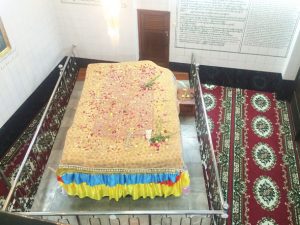The Quiet, Unassuming Resting Place of the Last Mughal Emperor
Saved under Community, Current Stories, Travel
Tags: Bahadur Shah Zafar, Battle of Panipat, Baytown, Clear Lake, Cypress, Desi news, Greater Houston, Houston, Houston Desi news, India, Indian American community, Indian News, Indians in America, Indo-American News, Katy, NRI, pearland, Rangoon, Schwedagon Pagoda, south asia, South India, Sugar Land, Texas, USA
By Jawahar Malhotra
YANGON, MYANMAR: As a schoolboy in Teheran, Iran, I learnt of the recent history of India – just as countless other schoolkids still do all over India – which was dominated for 350 years by the Muslim Turco-Mongol dynasty and the machinations of the British East India Company till 1947.
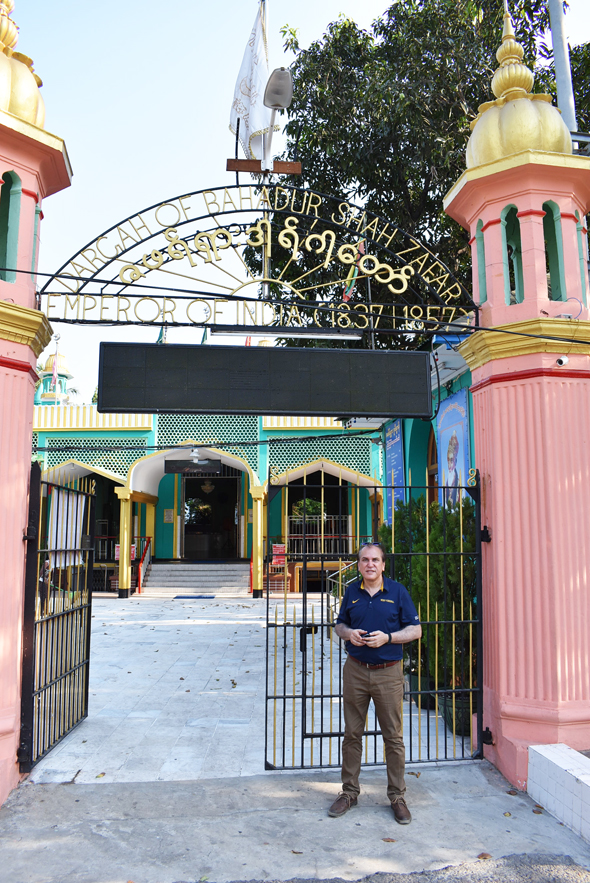
The mausoleum to the last Mughal Emperor Bahadur Shah Zafar is located not far from the Schwedagon Pagoda in Rangoon.
After his victory at the First Battle of Panipat over the Sultan of Delhi, Ibrahim Lodi, the first ruler Babur (who has first established himself in Kabul) started the empire that extended through his 18 successors – the most prominent being Hamayun, Akbar, Jehangir, Shah Jahan and Aurangzeb – and ended with Bahadur Shah II in 1857. And along with the whims of the Emperor and the fortunes of the Empire, the capital moved from Agra to Fatehpur Sikri to Lahore and to Shahjanabad (or Old Delhi).
And in the years of spending long summer holidays at my nana and naniji’s (maternal grandparents) home in Daryagunj (literally meaning the banks of the river Jamuna which still flows closeby), Old Delhi, my cousins and I would go for long strolls to the Lal Qila (Red Fort), Jama Masjid (World-reflecting Mosque), Chandni Chowk (Moonlit Plaza) and Sadar Bazar (wholesale market), the battlements of Purani Dilli (Old Delhi) and walk through the five remaining gates – Kashmiri Gate, Lahori Gate, Ajmeri Gate, Turkman Gate and Delhi Gate (which was the closest to our home), all monuments built by the architect emperor Shah Jahan, most famous for building the Taj Mahal.
And of course, there were other monuments built by the Mughals to see all across the area which is now known as New Delhi: the Qutab Minar, Humayun’s Tomb, Safdarjung’s Tomb, Purana Qila, Zafar Mahal, Hazrat Nizamuddin Darga and Mughal Gardens (which is actually a British addition to the President’s Residence) and we visited them too.
As would be expected after these centuries, Indian culture has assimilated the influences of the Muslim rule as well as the almost parallel and longer effect of the British (who first established their capital in Kolkata in 1858) who ultimately were forced out in 1947 after partitioning the unified country which had once included Afghanistan (during the Mughal period); Burma; Ceylon (now Sri Lanka); Nepal, Bhutan and Sikkim and The Maldives Islands.
When he acceded the much weakened throne in 1937, the last Mughal Emperor, Bahadur Shah II, more commonly known as Bahadur Shah Zafar, had authority only over the city of Shahjahanabad. He supported the Indian Rebellion of 1857, which was put down by the British East India Company. It had him tried for treason, imprisoned and exiled to Rangoon (now Yangon) and took over the country under the Government of India Act of 1858. Broken hearted and desolate in exile, Bahadur Shah Zafar died four years later in Rangoon in 1862 at the age of 87.
With all this history swarming in my brain, it was a fascinating pilgrimage for me to finally visit the exile home and resting place of the last Mughal Emperor Bahadur Shah Zafar whose mausoleum is about 1 km from the Schwedagon pagoda in Rangoon.
After he died, he was buried in the back of his compound, but 40 years later, by 1903, the location of his grave was forgotten. The British were forced to place a slab there and it was only in 1991 that his grave was once again located and a mausoleum constructed in 1994. His grave was uncovered about 12 feet deep and there it remains entombed and can be seen from a walk area above. The bodies of his wife Zinat Mahal and granddaughter are entombed in a room above, next to an empty tomb representing the emperor.
Bahadur Shah Zafar was also known as a Sufi poet and wrote the hauntingly lovely and melancholy ghazal “Lagta nahin hai dil mera” which is displayed in a frame on one side of the above-ground burial area, along with a few pictures of Zafar, including the last one on his death bed. In the poem, he laments his fate and concludes “how ill-fated is it for Zafar, that for his burial, he was not granted even two yards in his beloved home country.” The song was immortalized in song by the popular playback singer Mohammed Rafi in the 1960 movie Lal Qila. It was a particular favorite of my father’s who had an excellent voice as a former All India Radio singer (prior to joining the nascent Indian Foreign Service) and he would often sing it or listen to it on His Master’s Voice records on the old gramophone.
And so, the Mughal Dynasty died quietly in Rangoon.

